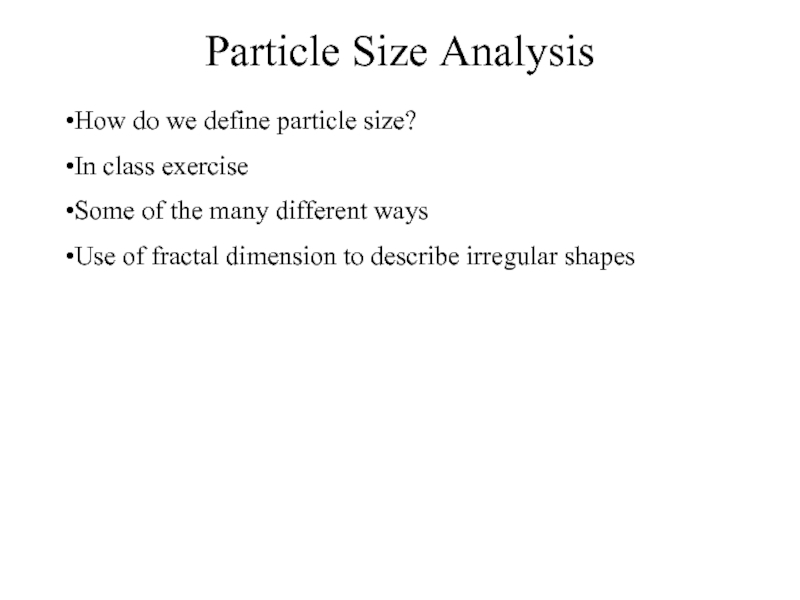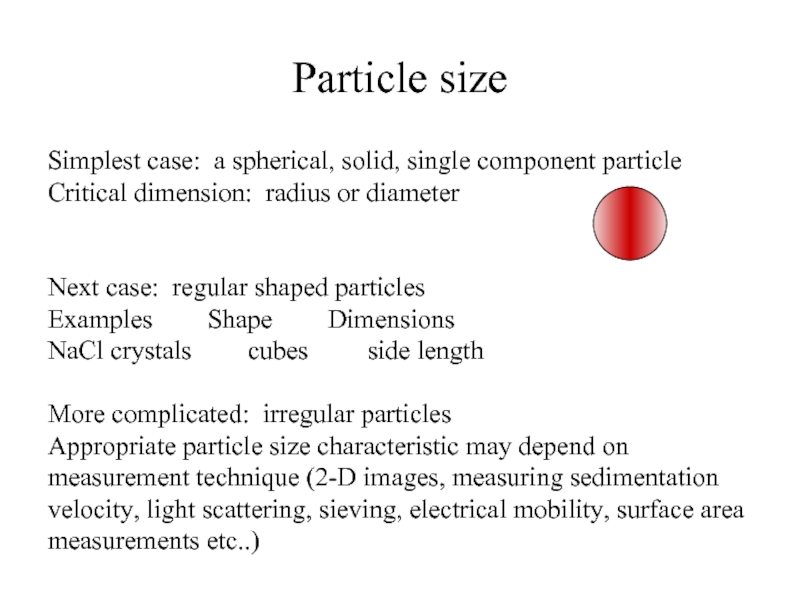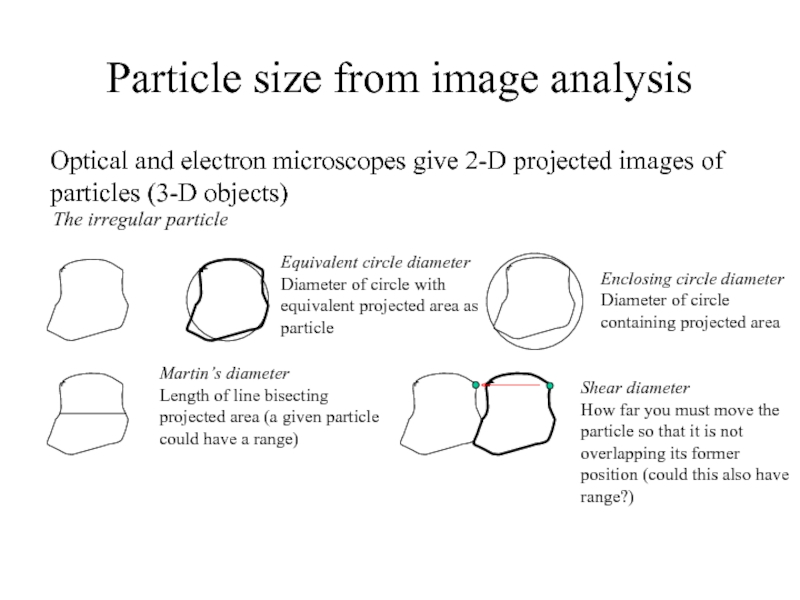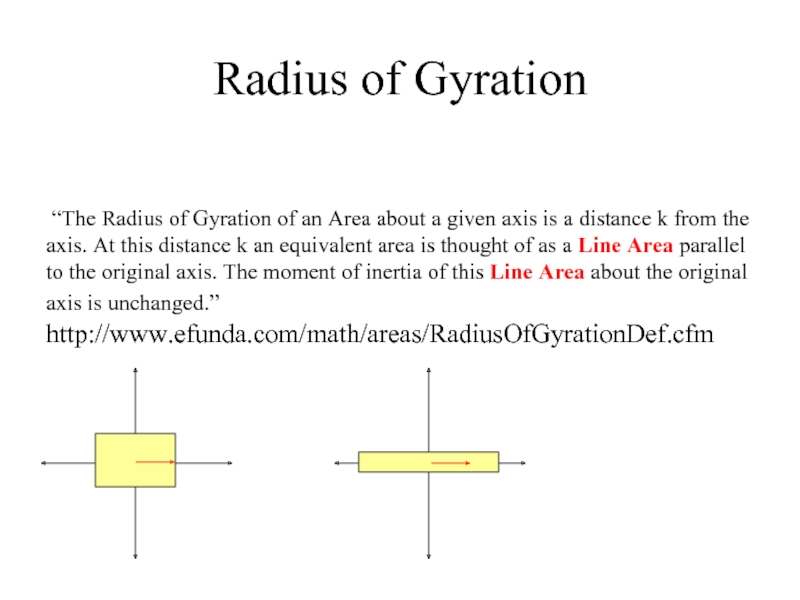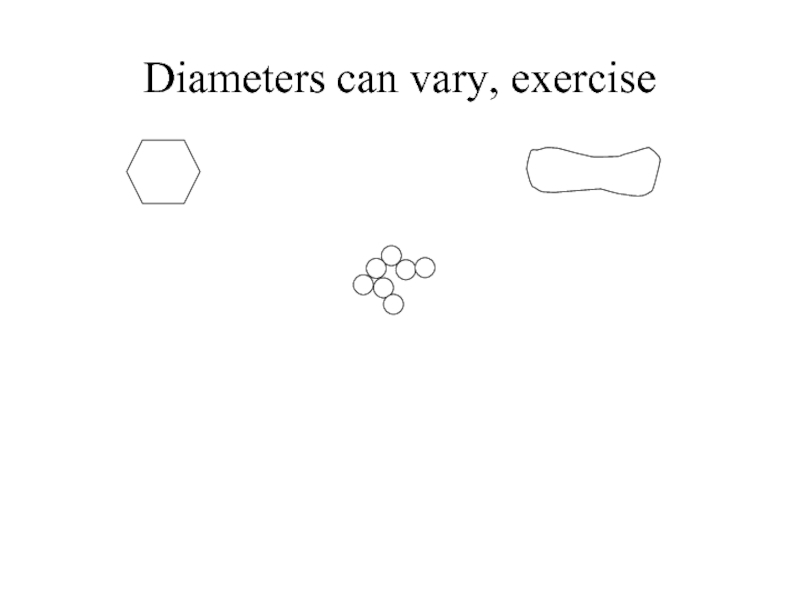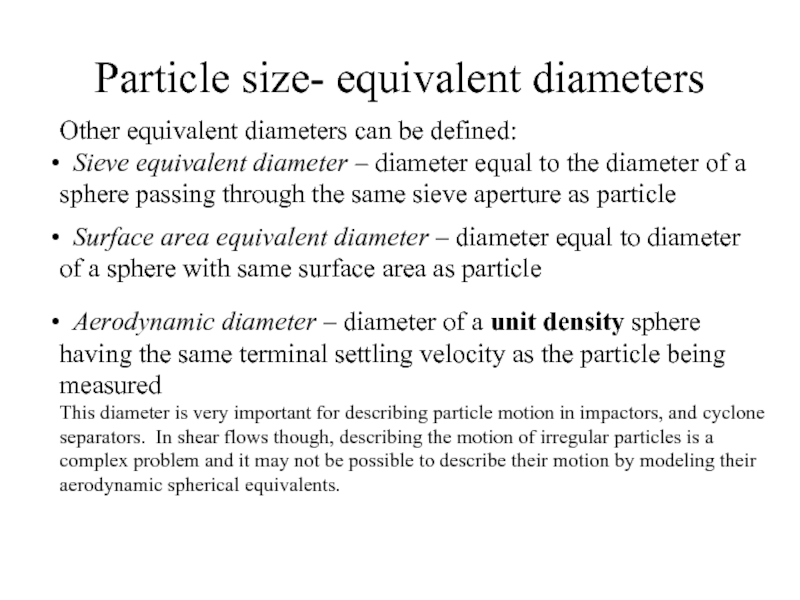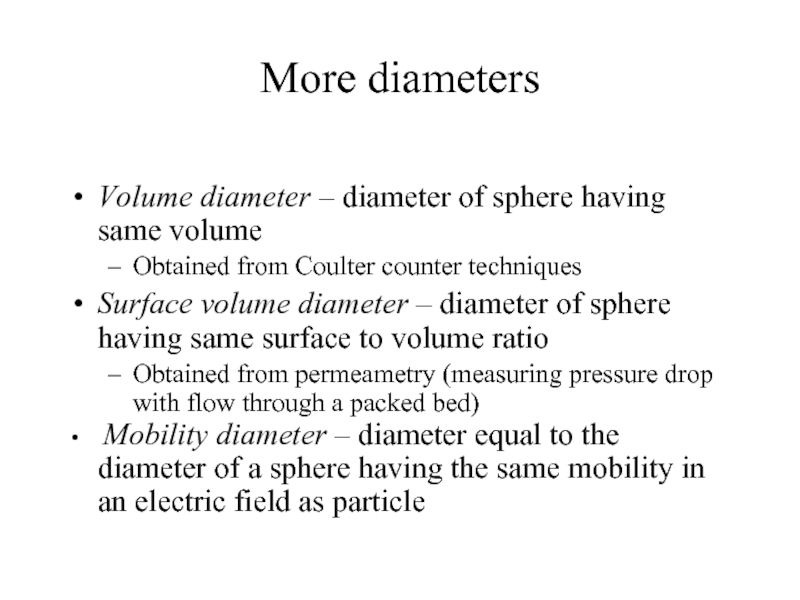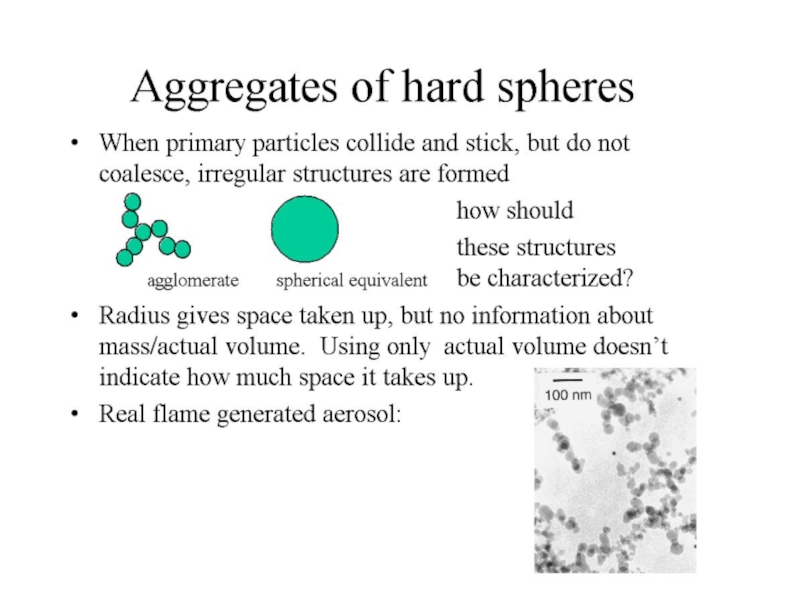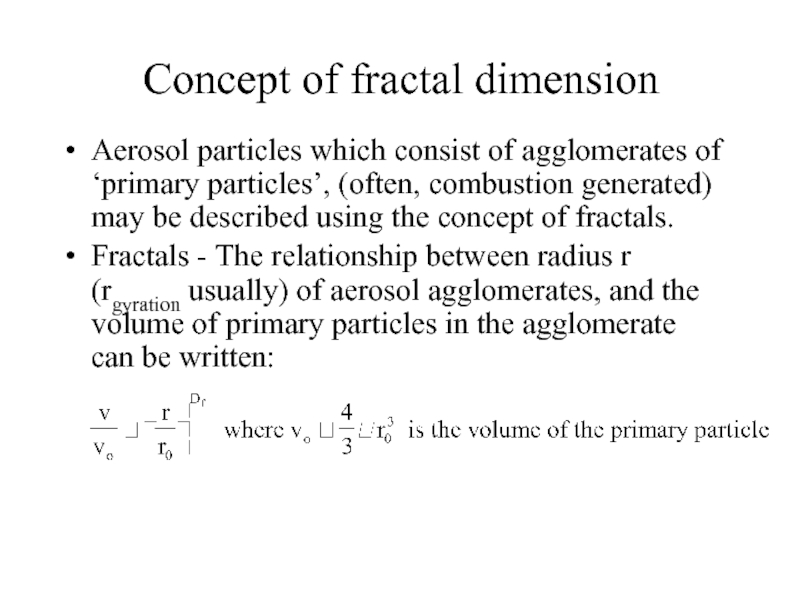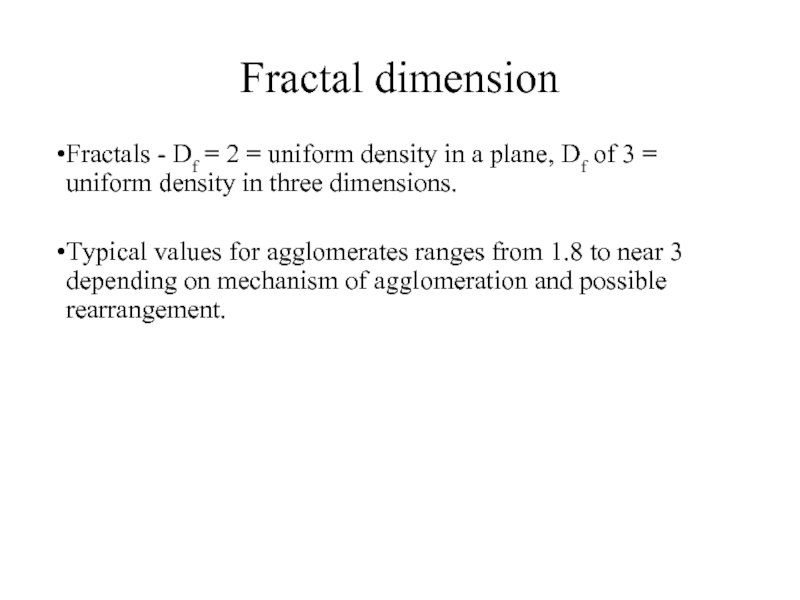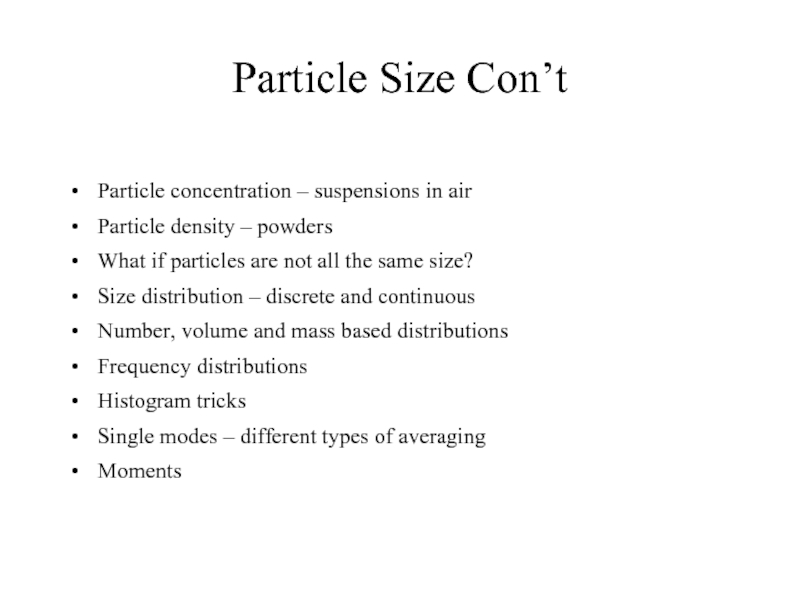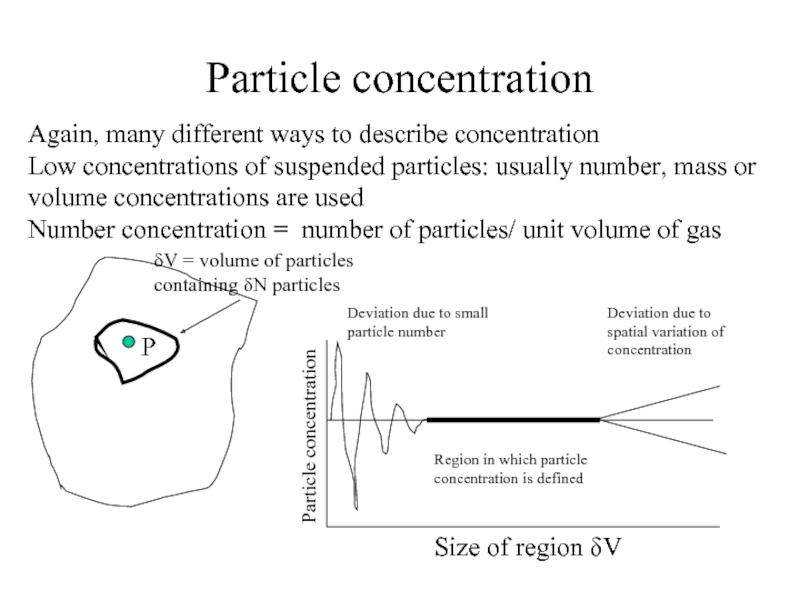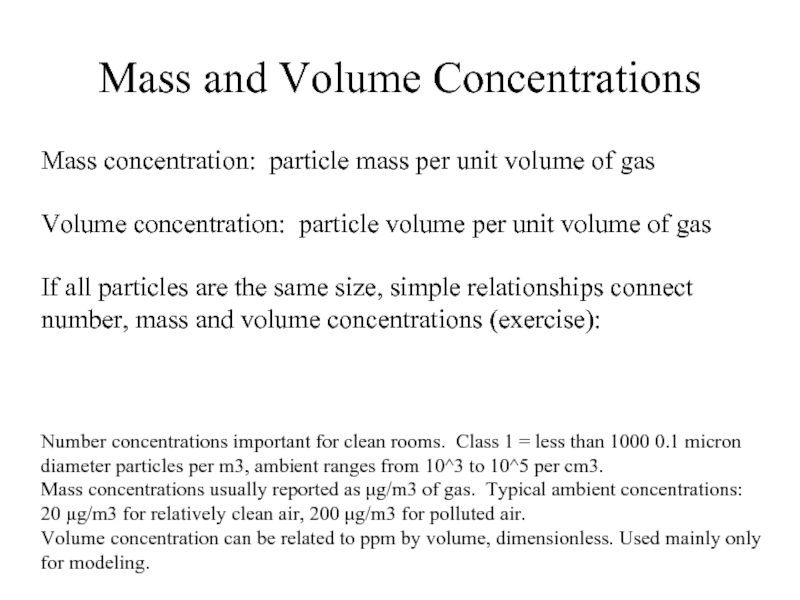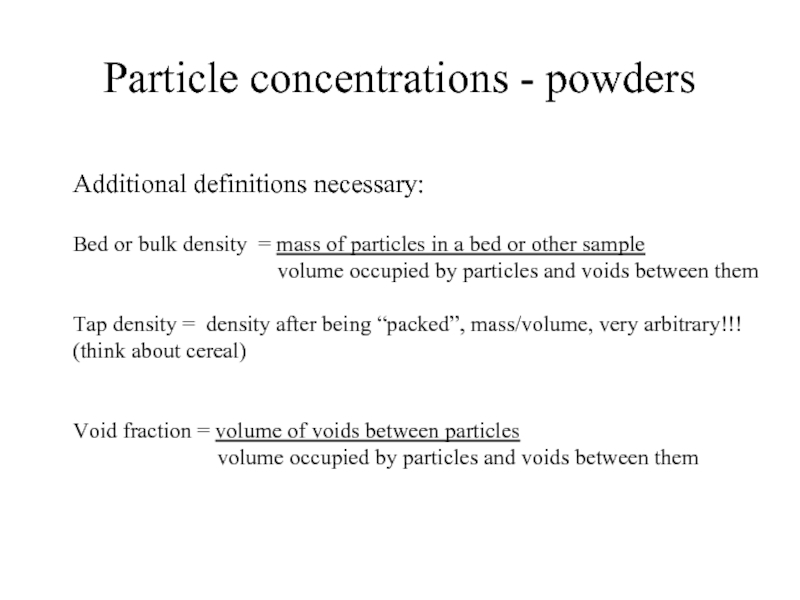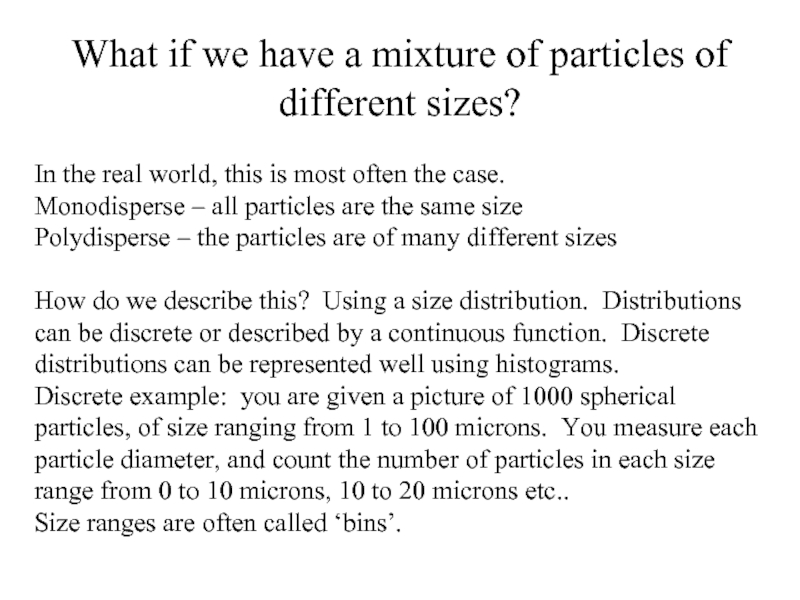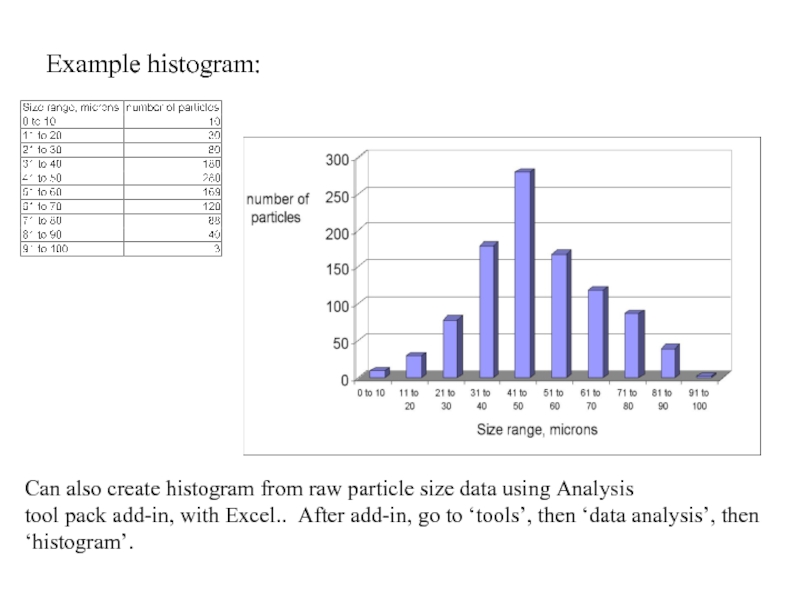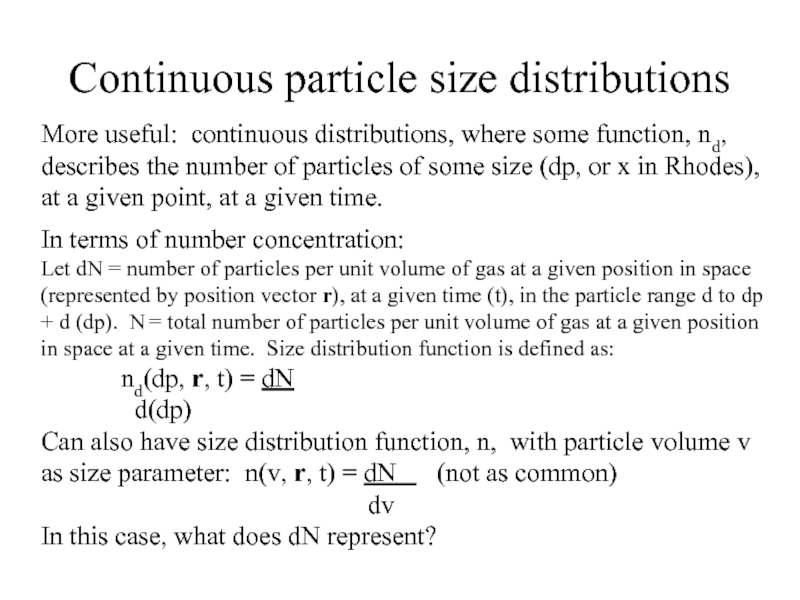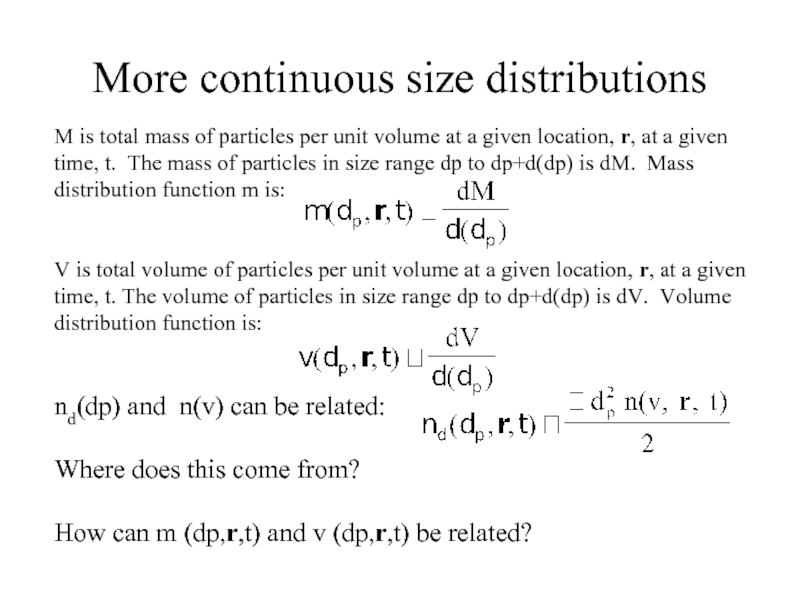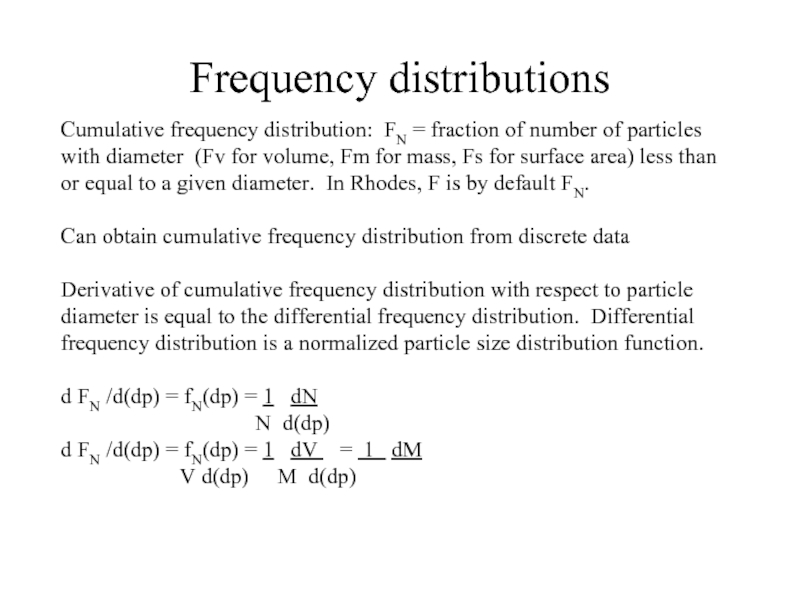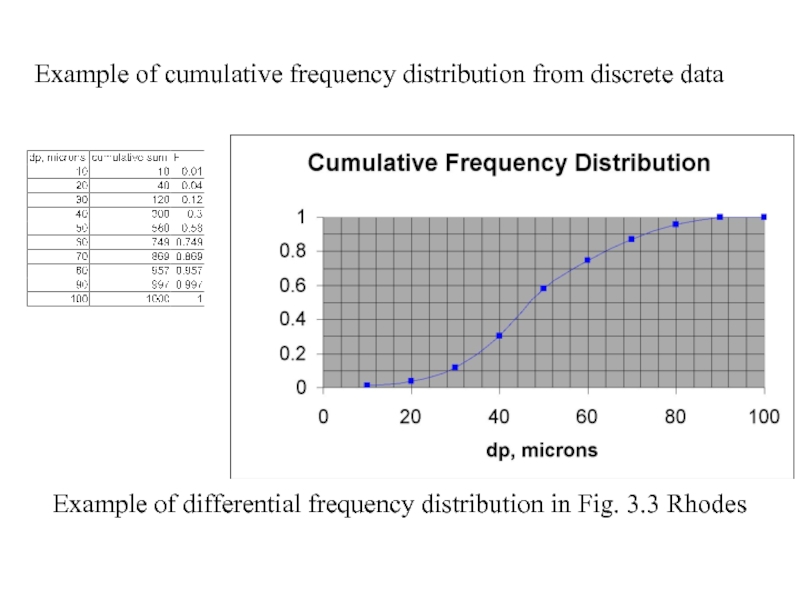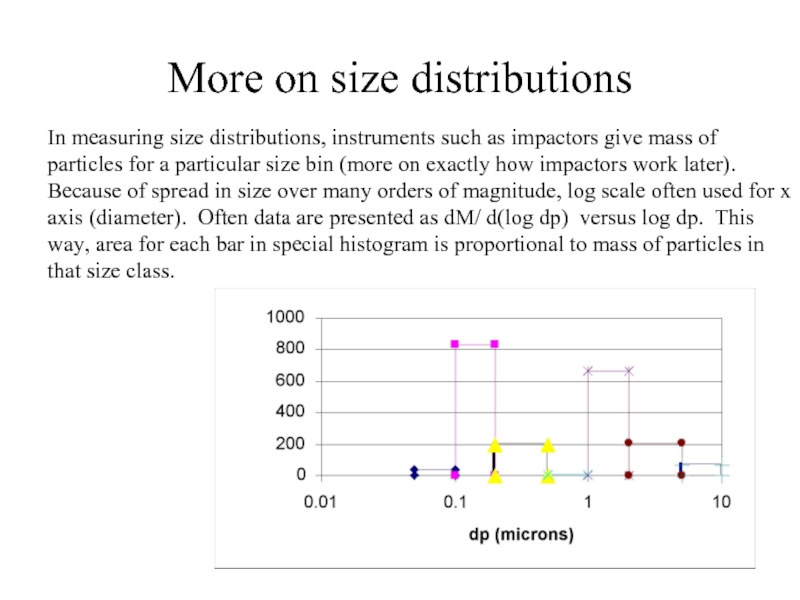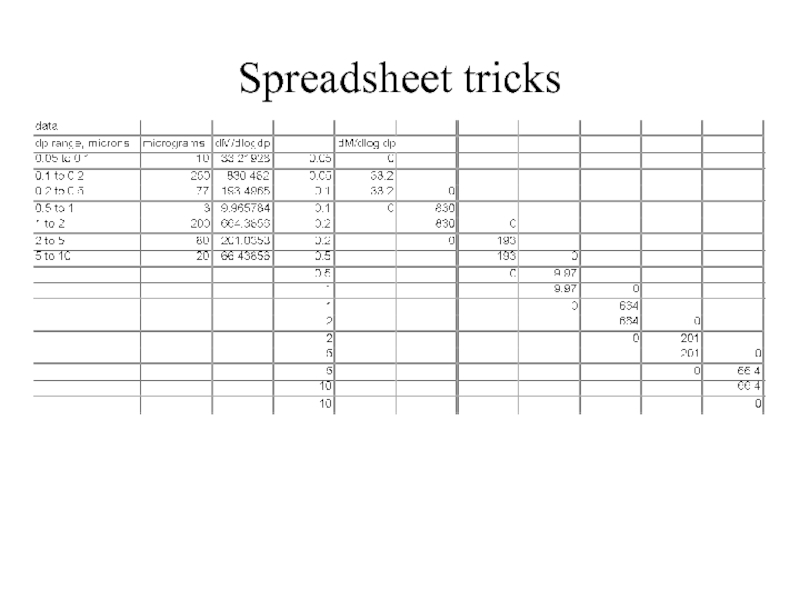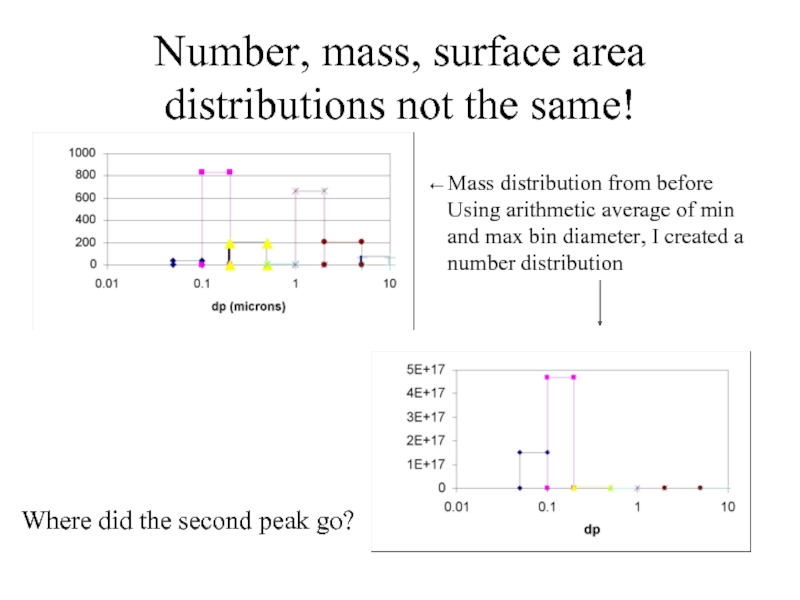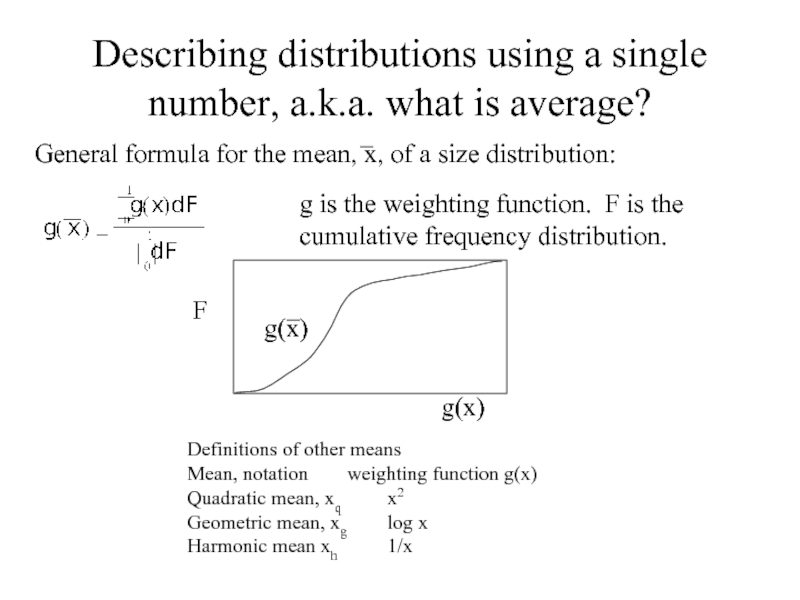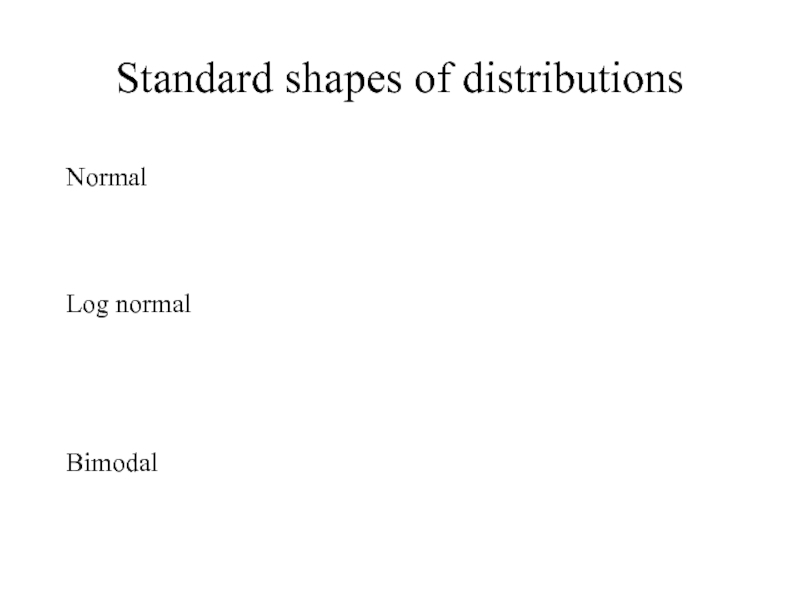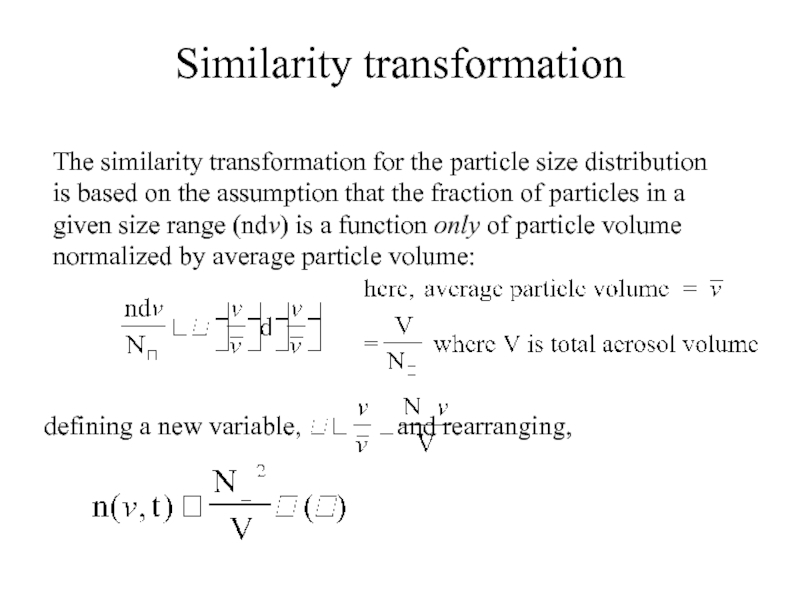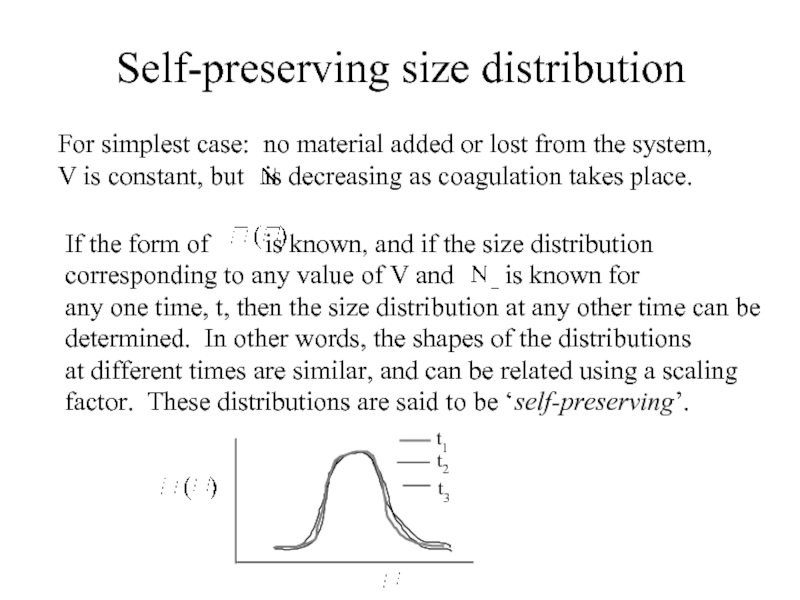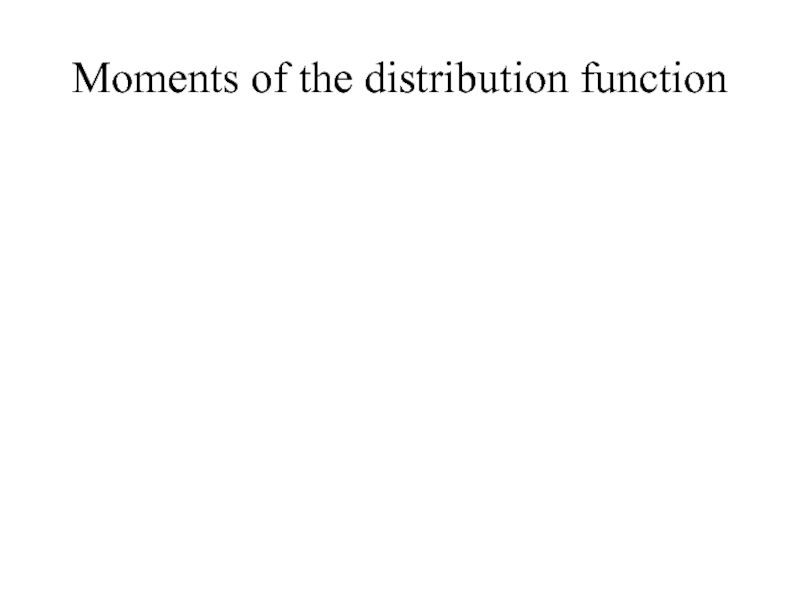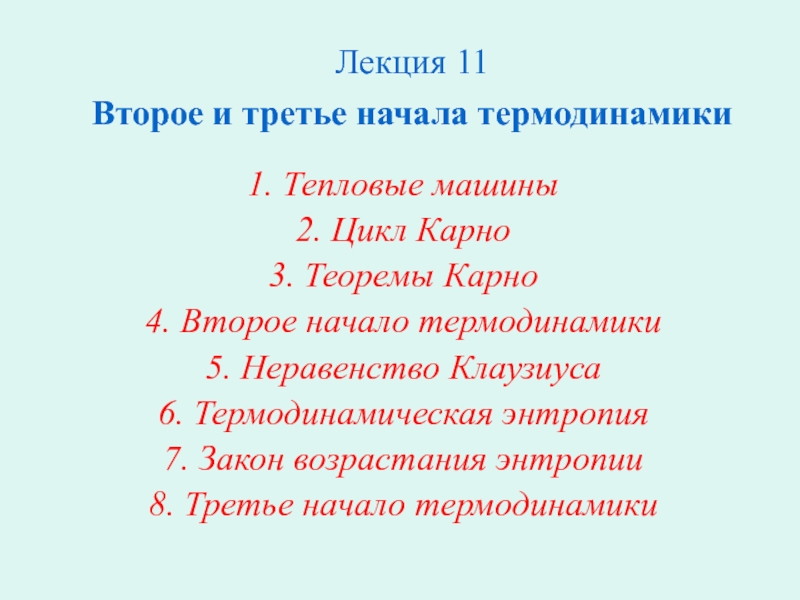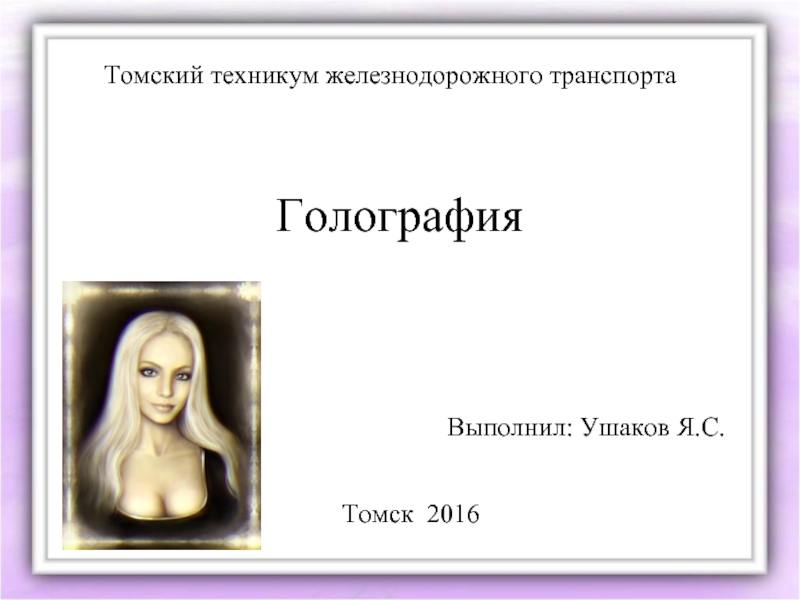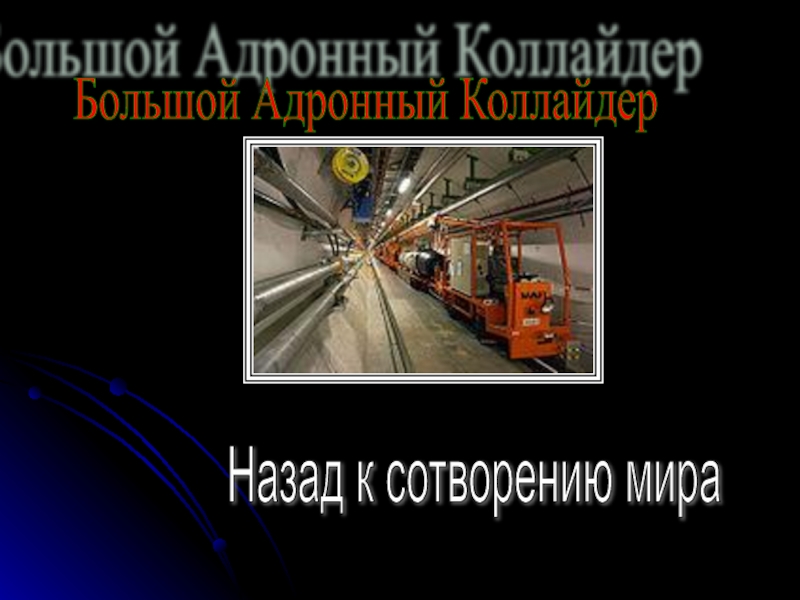- Главная
- Разное
- Дизайн
- Бизнес и предпринимательство
- Аналитика
- Образование
- Развлечения
- Красота и здоровье
- Финансы
- Государство
- Путешествия
- Спорт
- Недвижимость
- Армия
- Графика
- Культурология
- Еда и кулинария
- Лингвистика
- Английский язык
- Астрономия
- Алгебра
- Биология
- География
- Детские презентации
- Информатика
- История
- Литература
- Маркетинг
- Математика
- Медицина
- Менеджмент
- Музыка
- МХК
- Немецкий язык
- ОБЖ
- Обществознание
- Окружающий мир
- Педагогика
- Русский язык
- Технология
- Физика
- Философия
- Химия
- Шаблоны, картинки для презентаций
- Экология
- Экономика
- Юриспруденция
Particle Size Analysis презентация
Содержание
- 1. Particle Size Analysis
- 2. Particle size Simplest case: a spherical,
- 3. Particle size from image analysis Optical and
- 4. “The Radius of Gyration of an
- 5. Diameters can vary, exercise
- 6. Particle size- equivalent diameters Other equivalent diameters
- 7. More diameters Volume diameter – diameter of
- 9. Concept of fractal dimension Aerosol particles which
- 10. Fractal dimension Fractals - Df =
- 11. Particle Size Con’t Particle concentration – suspensions
- 12. Particle concentration Again, many different ways to
- 13. Mass and Volume Concentrations Mass concentration: particle
- 14. Particle concentrations - powders Additional definitions necessary:
- 15. What if we have a mixture of
- 16. Example histogram: Can also create histogram
- 17. Continuous particle size distributions More useful: continuous
- 18. More continuous size distributions M is
- 19. What do they look like?
- 20. Frequency distributions Cumulative frequency distribution: FN =
- 21. Example of cumulative frequency distribution from discrete
- 22. More on size distributions In measuring size
- 23. Spreadsheet tricks
- 24. Number, mass, surface area distributions not the
- 25. Describing distributions using a single number, a.k.a.
- 26. Standard shapes of distributions Normal
- 27. Similarity transformation The similarity transformation for the
- 28. Self-preserving size distribution For simplest case: no
- 29. Moments of the distribution function
Слайд 1Particle Size Analysis
How do we define particle size?
In class exercise
Some of
Use of fractal dimension to describe irregular shapes
Слайд 2Particle size
Simplest case: a spherical, solid, single component particle
Critical dimension:
Next case: regular shaped particles
Examples Shape Dimensions
NaCl crystals cubes side length
More complicated: irregular particles
Appropriate particle size characteristic may depend on measurement technique (2-D images, measuring sedimentation velocity, light scattering, sieving, electrical mobility, surface area measurements etc..)
Слайд 3Particle size from image analysis
Optical and electron microscopes give 2-D projected
The irregular particle
Equivalent circle diameter
Diameter of circle with equivalent projected area as particle
Enclosing circle diameter
Diameter of circle containing projected area
Martin’s diameter
Length of line bisecting projected area (a given particle could have a range)
Shear diameter
How far you must move the particle so that it is not overlapping its former position (could this also have range?)
Слайд 4 “The Radius of Gyration of an Area about a given
http://www.efunda.com/math/areas/RadiusOfGyrationDef.cfm
Radius of Gyration
Слайд 6Particle size- equivalent diameters
Other equivalent diameters can be defined:
Sieve
Surface area equivalent diameter – diameter equal to diameter of a sphere with same surface area as particle
Aerodynamic diameter – diameter of a unit density sphere having the same terminal settling velocity as the particle being measured
This diameter is very important for describing particle motion in impactors, and cyclone separators. In shear flows though, describing the motion of irregular particles is a complex problem and it may not be possible to describe their motion by modeling their aerodynamic spherical equivalents.
Слайд 7More diameters
Volume diameter – diameter of sphere having same volume
Obtained from
Surface volume diameter – diameter of sphere having same surface to volume ratio
Obtained from permeametry (measuring pressure drop with flow through a packed bed)
Mobility diameter – diameter equal to the diameter of a sphere having the same mobility in an electric field as particle
Слайд 9Concept of fractal dimension
Aerosol particles which consist of agglomerates of ‘primary
Fractals - The relationship between radius r (rgyration usually) of aerosol agglomerates, and the volume of primary particles in the agglomerate can be written:
Слайд 10Fractal dimension
Fractals - Df = 2 = uniform density in a
Typical values for agglomerates ranges from 1.8 to near 3 depending on mechanism of agglomeration and possible rearrangement.
Слайд 11Particle Size Con’t
Particle concentration – suspensions in air
Particle density – powders
What
Size distribution – discrete and continuous
Number, volume and mass based distributions
Frequency distributions
Histogram tricks
Single modes – different types of averaging
Moments
Слайд 12Particle concentration
Again, many different ways to describe concentration
Low concentrations of suspended
Number concentration = number of particles/ unit volume of gas
P
δV = volume of particles
containing δN particles
Particle concentration
Size of region δV
Deviation due to small particle number
Deviation due to spatial variation of concentration
Region in which particle concentration is defined
Слайд 13Mass and Volume Concentrations
Mass concentration: particle mass per unit volume of
Volume concentration: particle volume per unit volume of gas
If all particles are the same size, simple relationships connect number, mass and volume concentrations (exercise):
Number concentrations important for clean rooms. Class 1 = less than 1000 0.1 micron diameter particles per m3, ambient ranges from 10^3 to 10^5 per cm3.
Mass concentrations usually reported as μg/m3 of gas. Typical ambient concentrations: 20 μg/m3 for relatively clean air, 200 μg/m3 for polluted air.
Volume concentration can be related to ppm by volume, dimensionless. Used mainly only for modeling.
Слайд 14Particle concentrations - powders
Additional definitions necessary:
Bed or bulk density =
volume occupied by particles and voids between them
Tap density = density after being “packed”, mass/volume, very arbitrary!!!
(think about cereal)
Void fraction = volume of voids between particles
volume occupied by particles and voids between them
Слайд 15What if we have a mixture of particles of different sizes?
In the real world, this is most often the case.
Monodisperse – all particles are the same size
Polydisperse – the particles are of many different sizes
How do we describe this? Using a size distribution. Distributions can be discrete or described by a continuous function. Discrete distributions can be represented well using histograms.
Discrete example: you are given a picture of 1000 spherical particles, of size ranging from 1 to 100 microns. You measure each particle diameter, and count the number of particles in each size range from 0 to 10 microns, 10 to 20 microns etc..
Size ranges are often called ‘bins’.
Слайд 16Example histogram:
Can also create histogram from raw particle size data
tool pack add-in, with Excel.. After add-in, go to ‘tools’, then ‘data analysis’, then ‘histogram’.
Слайд 17Continuous particle size distributions
More useful: continuous distributions, where some function, nd,
In terms of number concentration:
Let dN = number of particles per unit volume of gas at a given position in space (represented by position vector r), at a given time (t), in the particle range d to dp + d (dp). N = total number of particles per unit volume of gas at a given position in space at a given time. Size distribution function is defined as:
nd(dp, r, t) = dN d(dp)
Can also have size distribution function, n, with particle volume v as size parameter: n(v, r, t) = dN (not as common)
dv
In this case, what does dN represent?
Слайд 18More continuous size distributions
M is total mass of particles per
V is total volume of particles per unit volume at a given location, r, at a given time, t. The volume of particles in size range dp to dp+d(dp) is dV. Volume distribution function is:
nd(dp) and n(v) can be related:
Where does this come from?
How can m (dp,r,t) and v (dp,r,t) be related?
Слайд 20Frequency distributions
Cumulative frequency distribution: FN = fraction of number of particles
Can obtain cumulative frequency distribution from discrete data
Derivative of cumulative frequency distribution with respect to particle diameter is equal to the differential frequency distribution. Differential frequency distribution is a normalized particle size distribution function.
d FN /d(dp) = fN(dp) = 1 dN
N d(dp)
d FN /d(dp) = fN(dp) = 1 dV = 1 dM
V d(dp) M d(dp)
Слайд 21Example of cumulative frequency distribution from discrete data
Example of differential frequency
Слайд 22More on size distributions
In measuring size distributions, instruments such as impactors
Слайд 24Number, mass, surface area distributions not the same!
Mass distribution from before
Using
Where did the second peak go?
Слайд 25Describing distributions using a single number, a.k.a. what is average?
General
g is the weighting function. F is the cumulative frequency distribution.
F
g(x)
g(x)
Definitions of other means
Mean, notation weighting function g(x)
Quadratic mean, xq x2
Geometric mean, xg log x
Harmonic mean xh 1/x
Слайд 27Similarity transformation
The similarity transformation for the particle size distribution
is based on
given size range (ndv) is a function only of particle volume
normalized by average particle volume:
defining a new variable, and rearranging,
Слайд 28Self-preserving size distribution
For simplest case: no material added or lost from
V is constant, but is decreasing as coagulation takes place.
If the form of is known, and if the size distribution
corresponding to any value of V and is known for
any one time, t, then the size distribution at any other time can be
determined. In other words, the shapes of the distributions
at different times are similar, and can be related using a scaling
factor. These distributions are said to be ‘self-preserving’.
t1
t2
t3
